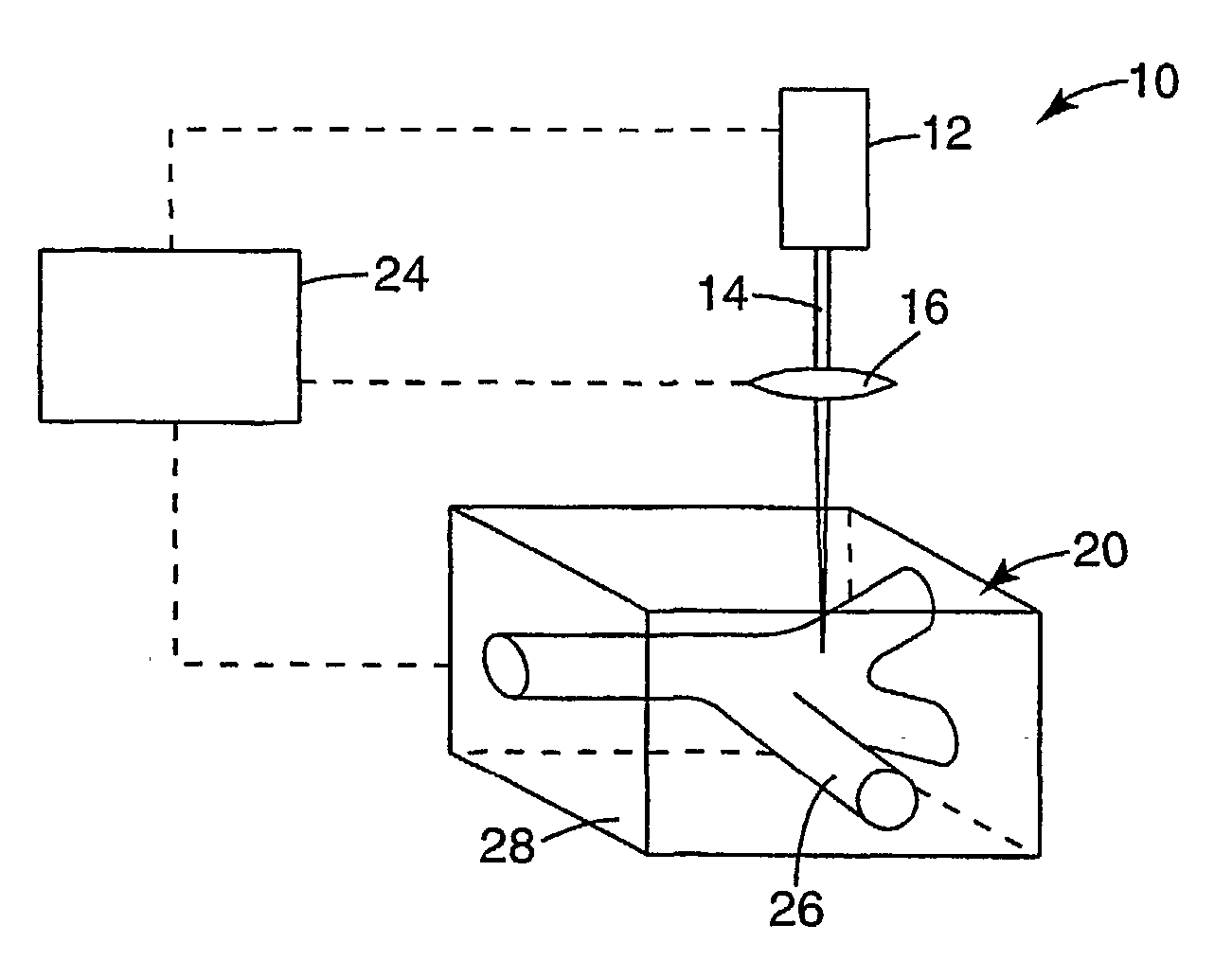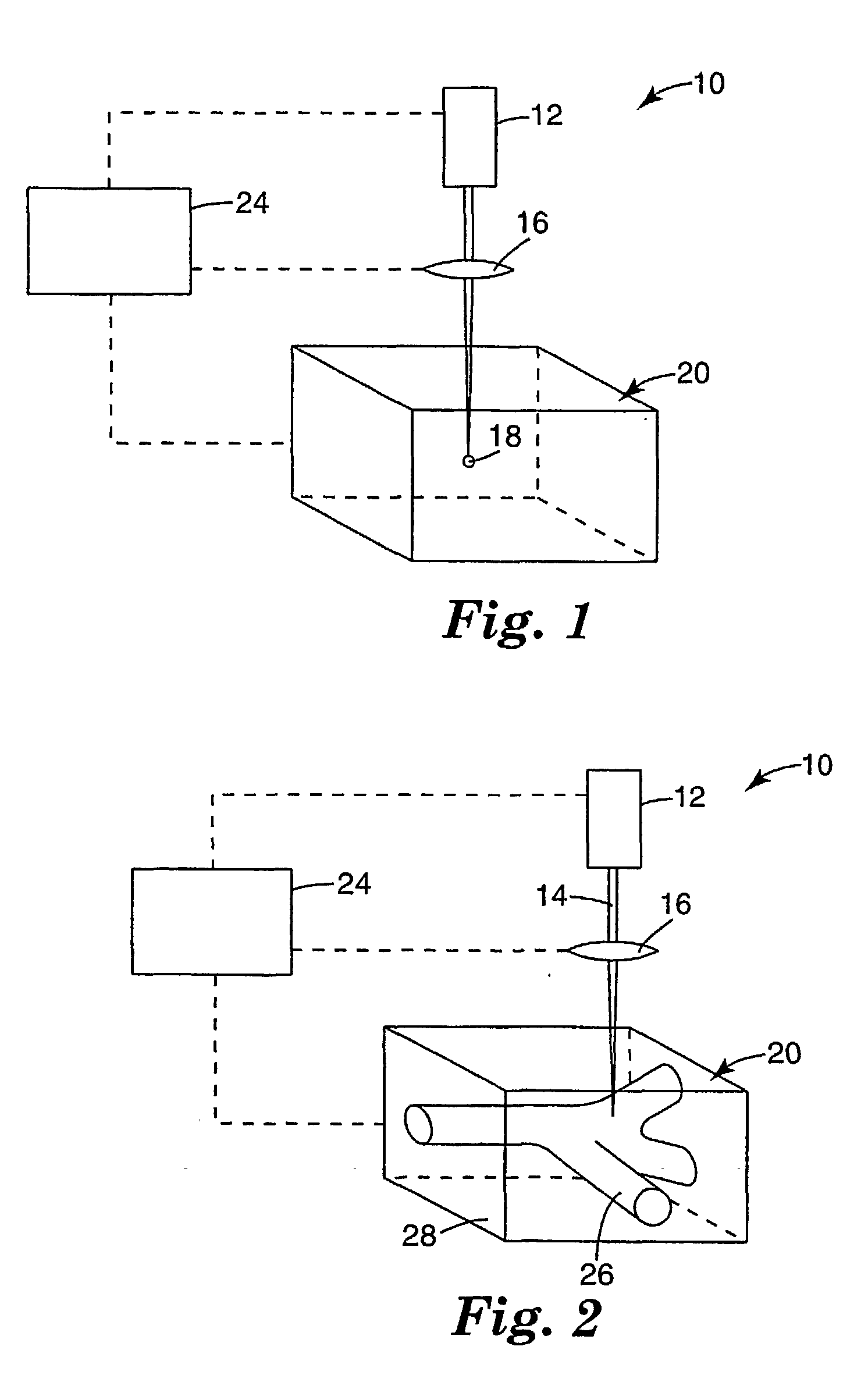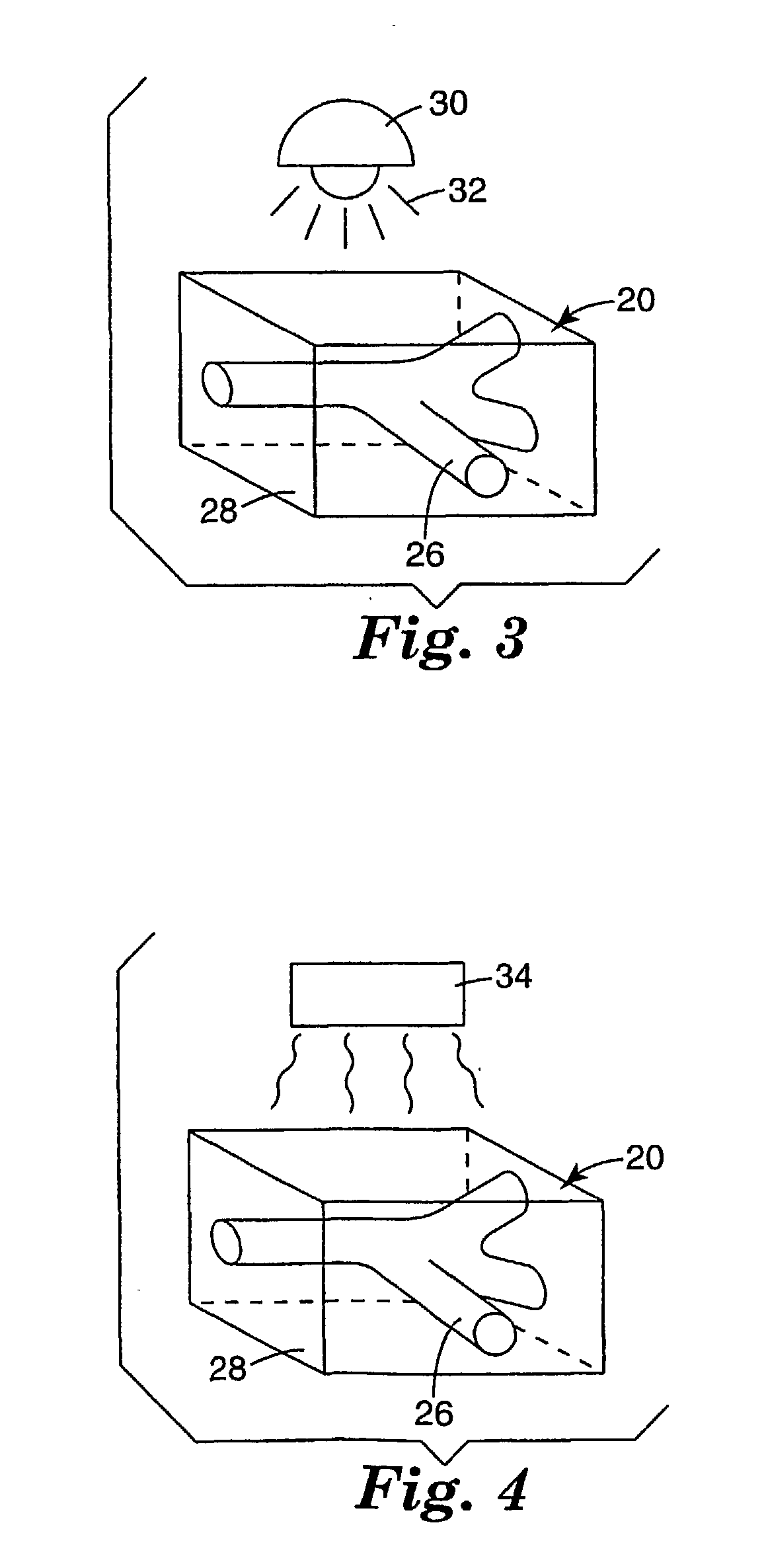Multiphoton curing to provide encapsulated optical elements
a technology of optical elements and curing, which is applied in the direction of photomechanical equipment, instruments, originals for photomechanical treatment, etc., can solve the problems of inability to manufacture mass quantities of optical elements/devices, inability to meet the requirements of optical elements, etc., to achieve stable, reliable optical elements/devices, and induce single and/or multi-photon photopolymerization
- Summary
- Abstract
- Description
- Claims
- Application Information
AI Technical Summary
Benefits of technology
Problems solved by technology
Method used
Image
Examples
example 1
[0107] A solution (40% solids in methylene chloride) containing 40% by weight polymethyl methacrylate (mw 120,000, n=1.490, Aldrich Chemical Co., Milwaukee, Wis.), 25% by weight phenoxyethyl acrylate, 34% by weight of bisphenol A glycerolate diacrylate (Ebecryl 3700™, UCB Chemicals, Symrna, Ga.), and 1% by weight 4,4′-bis(diphenylamino)-trans-stilbene is prepared. The solution is coated on a silicon wafer approximately 500 microns thick and dried in an oven at 60° C. Exposure is performed using a two-photon microscope with a Ti:Sapphire laser operating the two-photon absorption maximum of 4,4′-bis(diphenylamino)-trans-stilbene, 700 nm, and the light is focused through an oil-immersion objective with NA=1.4. X-Y-Z control of the sample is accomplished using a manipulator mounted on the microscope stage. A pattern of interconnected waveguides with primary axes parallel and perpendicular to the plane of the film is written into the medium, resulting in a three dimensional image of the ...
example 2
[0108] A solution (40% solids in methylene chloride) containing 60% by weight cellulose acetate butyrate (MW 70,000, 13.5 wt % acetyl, 37 wt % butyryl, Aldrich Chemical Co., Milwaukee, Wis.), 25% by weight phenoxyethyl acrylate (Aldrich Chemical Co.), 34% by weight bisphenol A glycerolate diacrylate (Ebecryl 3700™, UCB Chemicals), and 1% by weight 4,4′-bis(diphenylamino)-trans-stilbene is prepared. The solution is coated on a silicon wafer approximately 500 microns thick and dried in an oven at 60° C. Exposure is performed using a two-photon microscope with a Ti:Sapphire laser operating at the two-photon absorption maximum of 4,4′-bis(diphenylamino)-trans-stilbene, 700 nm, and the light is focused through an oil-immersion objective with NA=1.4. X-Y-Z control of the sample is accomplished using a manipulator mounted on the microscope stage. A pattern of interconnected waveguides with primary axes parallel and perpendicular to the plane of the film is written into the medium, resultin...
example 3
[0116] A low refractive index buffer layer between glass and active layers was prepared by spin coating a solution of the composition given in Table 1 (16% solids in 1,2-dichloroethane) onto microscope slides, evaporating the solvent in an 80° C. oven for 10 minutes, and then curing for 10 minutes under Sylvania 350BLB UV lights. The cured buffer layer thickness was approximately 10 microns thick.
TABLE 1Composition of the buffer layerIngredientWeight %Cellulose acetate butyrate (Eastman Chemicals,89.37Kingsport, TN)Trimethylpropane triacrylate, SR-351 (Sartomer Co.8.94West Chester, PA)Benzil dimethyl ketal, Esacure KB1 (Sartomer Co.1.70West Chester, PA)
[0117] The active layer, the composition of which is given in Table 2, was then spun coat from 25% solids solution in 1,2-dichloroethane on top of the prepared buffer layer and dried in an 80° C. oven for 10 minutes. To further increase the thickness, a second active layer was spun on top and the samples dried again. The final thick...
PUM
| Property | Measurement | Unit |
|---|---|---|
| wavelengths | aaaaa | aaaaa |
| weight percent | aaaaa | aaaaa |
| weight percent | aaaaa | aaaaa |
Abstract
Description
Claims
Application Information
 Login to View More
Login to View More - R&D
- Intellectual Property
- Life Sciences
- Materials
- Tech Scout
- Unparalleled Data Quality
- Higher Quality Content
- 60% Fewer Hallucinations
Browse by: Latest US Patents, China's latest patents, Technical Efficacy Thesaurus, Application Domain, Technology Topic, Popular Technical Reports.
© 2025 PatSnap. All rights reserved.Legal|Privacy policy|Modern Slavery Act Transparency Statement|Sitemap|About US| Contact US: help@patsnap.com



